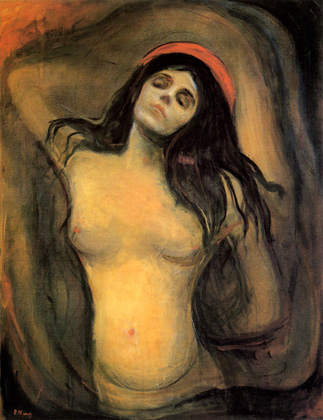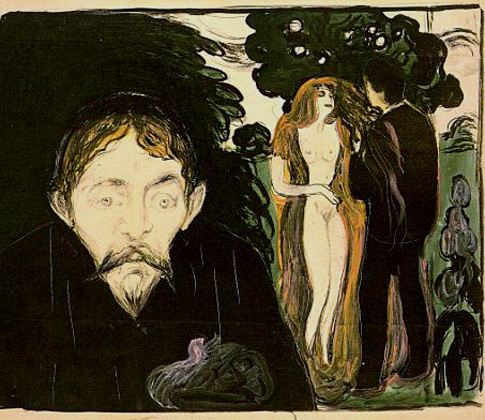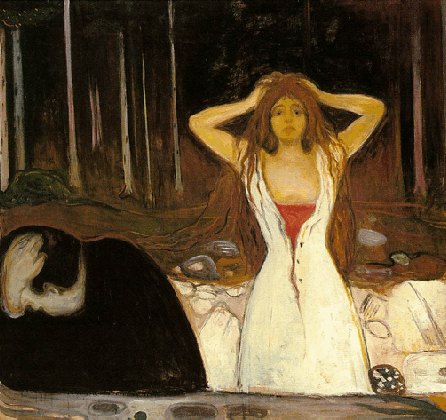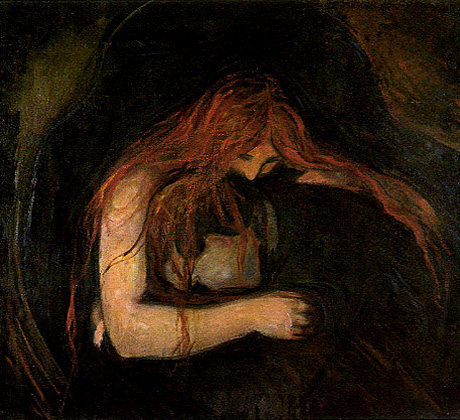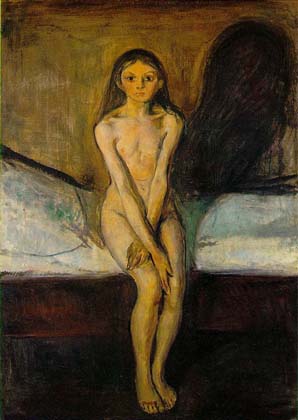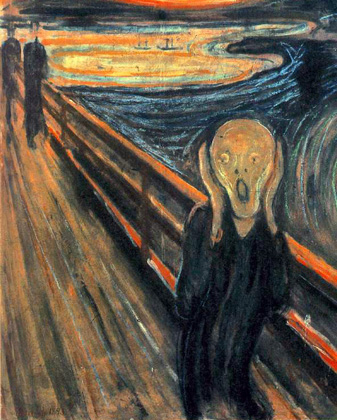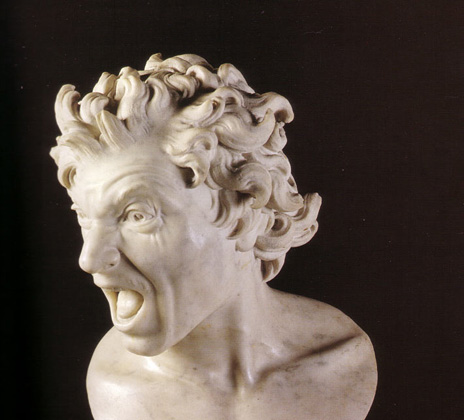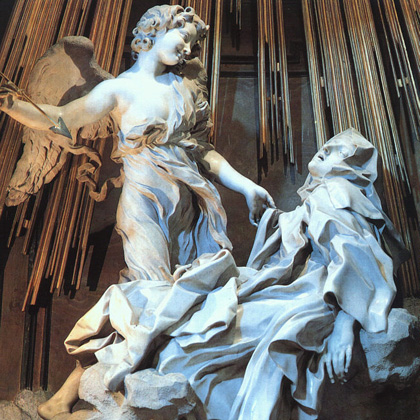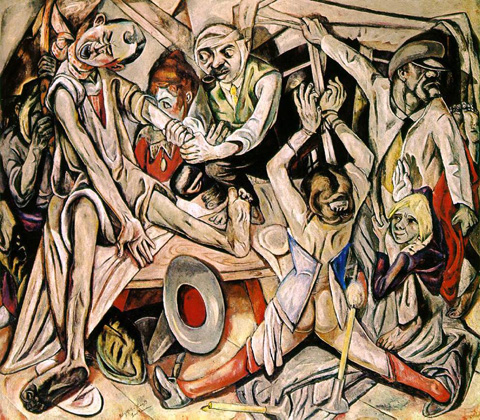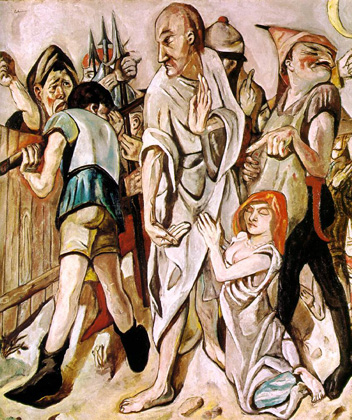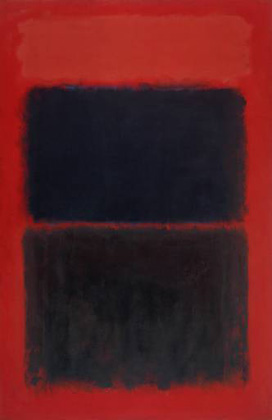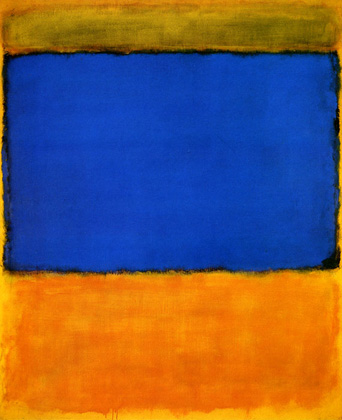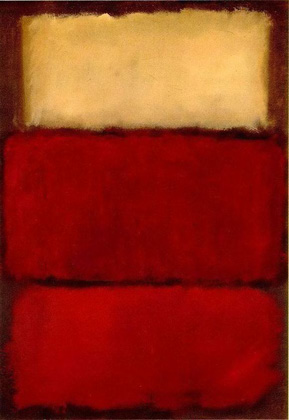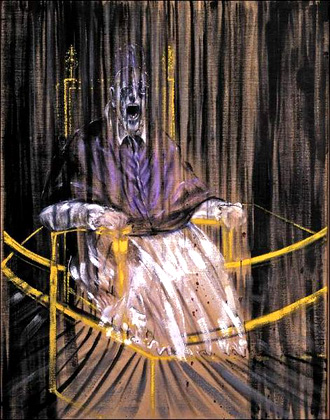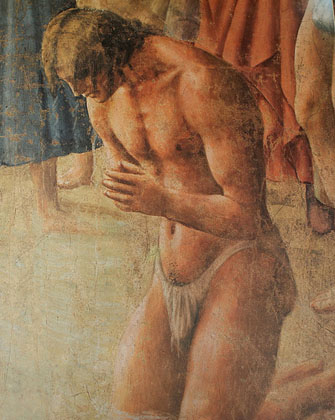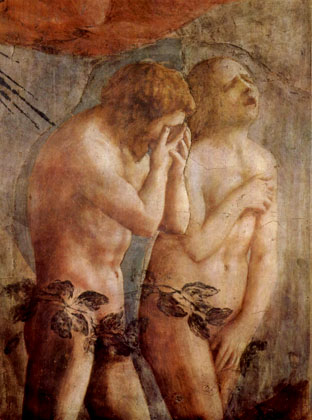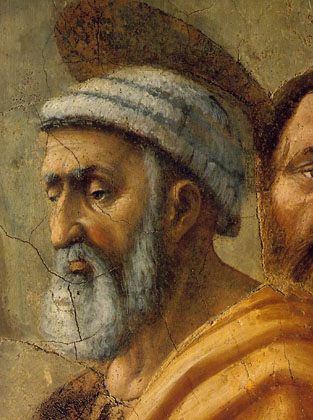AREAS OF KNOWLEDGE:
THE ARTS
EVOKED EMOTIONS IN THE VISUAL ARTS
This unit of inquiry based on canonical artworks, links with the Shostokovich 8th String quartet session―where the potential for non-linguistic forms of representation to tap directly into the emotions was introduced. Students will recognize Masaccio’s Expulsion from the Garden of Eden from the Figs viewed from multiple perspectives unit.
As embodied individuals our animal drives and raw emotions loom large. Higher than the beasts, we do not live only in the now. We anticipate our fortune, and our suffering. We are aware of our emotions and what triggers them, but not entirely so. The biological triggers for our passions are mostly involuntary. They can break through to the surface unannounced.
CLASS ACTIVITY:
GALLERY OF POWERFUL EMOTIONS AND APPETITES
Students work in threes. They are provided with color reproductions of the various artworks. They are asked collectively to identify and write down the emotions evoked by the various artworks. Lively discussion is, of course, encouraged.
After about 10 minutes the whole class reconvenes. The images are projected on the wall and individual students are called upon to share their findings on a randomly chosen artwork. The teacher makes a cumulative master list on the whiteboard of all the emotions identified.
Some of the guiding questions from the Shostakovich session can be revisited here; but the main objective is to get students fired up about the idea of the emotions and the appetites as both a driving forces behind, and at times, serious limitations to, knowing.
Six paintings by Edvard Munch from the Nasjonalgalleriat, Oslo:
Puberty (1894-95) Oil on canvas
Jealousy (1896) Lithograph
Madonna (1894-95) Oil on canvas.
Vampire (1893-94) Oil on canvas.
The Scream (1893) Oil, tempera, and pastel on cardboard.
Ashes 1894. Oil on canvas
Two marble sculptures by Gianlorenzo Bernini:
Ecstasy of St. Teresa (1647-52) in Santa Maria della Vittoria, Rome.
Damned soul (1619) Spanish embassy, Palazzo di Spagna, Rome.
Two oil paintings by Max Beckmann:
The Night (1918-19) Kunstsammlung Düsseldorf, Germany.
Christ and the Woman Taken in Adultery (1917) St. Louis Art Museum.
Three monumental color field oil paintings by Mark Rothko (1903-1970): Untitled, Light Red Over Black and Untitled.
“I’m not an abstractionist. I’m not interested in the relationship of color or form or anything else. I’m interested only in expressing basic human emotions: tragedy, ecstasy, doom, and so on.”
Two oil paintings by Francis Bacon:
Three Studies for Figures at the Base of a Crucifixion (Central panel of triptych) (1944) Oil on board. Tate Britain.
Study after Velazquez's Portrait of Pope Innocent X (1953) Oil on canvas. Des Moines Art Center, Iowa.
Details from three of the frescoes in the Cappella Brancacci, Santa Maria del Carmine, Florence by Masaccio (1424-28)
Expulsion from the Garden of Eden (1424-28)
The Distribution of Alms and the Death of Ananias
The Baptism of the Neophytes
CONSOLIDATING THE ARTWORK ACTIVITY
Eminent neuroscientist, Antonio Damasio (2003: 39-45) makes a distinction between the “primary emotions,” such as fear, anger, disgust and happiness, and the “social emotions,” such as sympathy, embarrassment and shame. He also identifies “background emotions,” which include: edginess, tranquility and enthusiasm.
Damasio, Antonio (2003) Looking for Spinoza: Joy, Sorrow and the Feeling Brain. Harcourt. Orlando, FL.
Students should make a table with three column headers: “Primary,” “Social” and “Background.” They should:
Place Damasio’s examples in the correct column.
Draw a line across the table then attempt to place the emotions listed on the whiteboard from the artwork activity in the appropriate column.
Draw a second line and write in the appropriate column any other important emotions that are missing.
Are background emotions similar to moods? Are background emotions the same as personality predispositions?
Pdf of artwork and guiding questions
